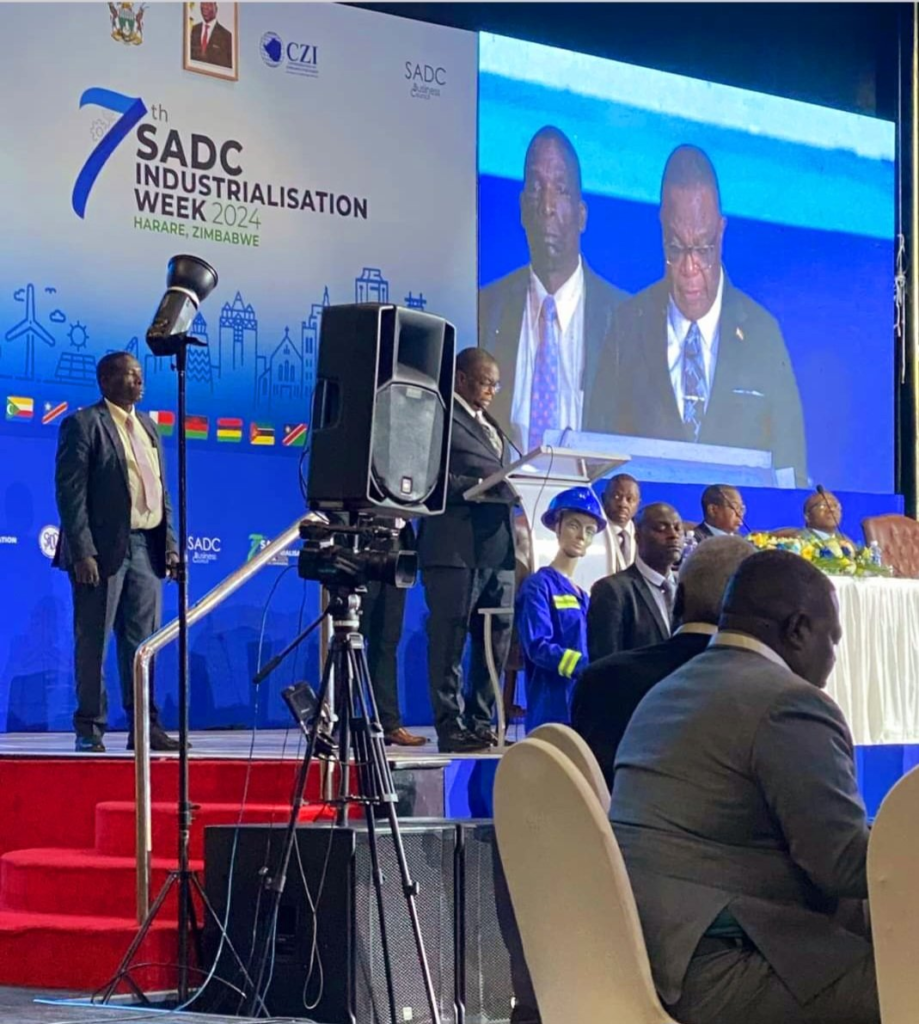SADC INDUSTRIALISATION WEEK IN ZIMBABWE: A STARK CONTRAST TO REALIT

The Southern African Development Community (SADC) Industrialisation Week is happening in Harare, Zimbabwe, from July 28 to August 2, 2024. This event is supposed to focus on promoting innovation to unlock opportunities for sustainable economic growth and development towards an industrialised SADC. Yet, the situation in Zimbabwe paints a very different picture.
The irony is that while the SADC Industrialisation Week aims to drive industrialisation in the region, Zimbabwe itself has been rapidly de-industrialising. This has led to economic turmoil and widespread poverty. According to the United Nations Economic Commission for Africa, no country has managed to lift millions out of poverty without industrialisation.
This event, held at the Harare International Conference Centre, is the largest public-private platform for industrialisation in the SADC region. It involves SADC member states, private sector partners, international organisations, policymakers, researchers, small and medium-sized enterprises (SMEs), financial institutions, and civil society. They gather to share experiences on driving industrialisation and economic transformation.
The week-long event includes seminars, meetings, workshops, a gala dinner, exhibitions, and visits to some manufacturing facilities and industrial hubs in Zimbabwe. Key focus areas are mineral beneficiation, agro-processing, pharmaceuticals, infrastructure development, women and youth entrepreneurship, and enterprises in the African Continental Free Trade Area.
However, the backdrop to this conference is the severe decline in Zimbabwe’s industrial sector. Since 2000, thousands of companies in Zimbabwe have shut down. Major companies such as Anglo American plc, Lonmin Plc, HJ Heinze, BP, Shell, Rio Tinto, David Whitehead, British Airways, Lufthansa, Qantas, Barclays, and Standard Chartered have either left or closed operations in Zimbabwe. These closures are due to the harsh business environment, inconsistent policies, land reforms, indigenisation policies, mismanagement, and corruption.
In 1980, Zimbabwe was the second most industrialised country in Sub-Saharan Africa after South Africa. Today, it is one of the poorest economic performers in the region. Zimbabwe has become an example of how not to manage an economy. The agriculture, mining, and manufacturing sectors, once the pillars of the Zimbabwean economy, have suffered greatly due to poor government policies, resulting in their near-collapse and massive unemployment.
Currently, an estimated 90% of the Zimbabwean population is unemployed. Many people survive by working in the informal sector, often selling second-hand clothes and other basic items. Millions have left Zimbabwe, seeking better opportunities in neighboring countries like Botswana and South Africa, and further afield in the United Kingdom, Australia, Canada, and the United States.
The manufacturing sector in Zimbabwe almost completely collapsed by 2015. Companies either closed or relocated due to the harsh economic climate. The decline of the manufacturing sector began in the 1990s and continues to this day. For example, Bulawayo, once the industrial hub of Zimbabwe and nicknamed “Kontuthuziyathunqa” (place where smoke billows out of industries), is now filled with churches and non-manufacturing activities.
The United Nations Economic Commission for Africa states that industrialisation is the most certain route to rapid, sustained, and sustainable economic development for countries with large populations. They emphasize that no country has lifted millions out of poverty without industrialising. Successful industrialisation is the key to structural transformation and sustained economic growth that Southern Africa needs.
For Southern Africa to industrialise successfully, it must upgrade its productive capacity, promote investment in modern industries, develop and strengthen value chains, and deepen opportunities for regional integration and trade. The commission highlights the need for inclusive and sustainable industrialisation, addressing infrastructure deficits, adopting sound macroeconomic policies, promoting technological learning, and using traditional revenue streams to build an export-oriented manufacturing sector.
As SADC Industrialisation Week unfolds in Harare, the stark contrast between the event’s goals and Zimbabwe’s current state of de-industrialisation serves as a poignant reminder of the challenges facing the region.



